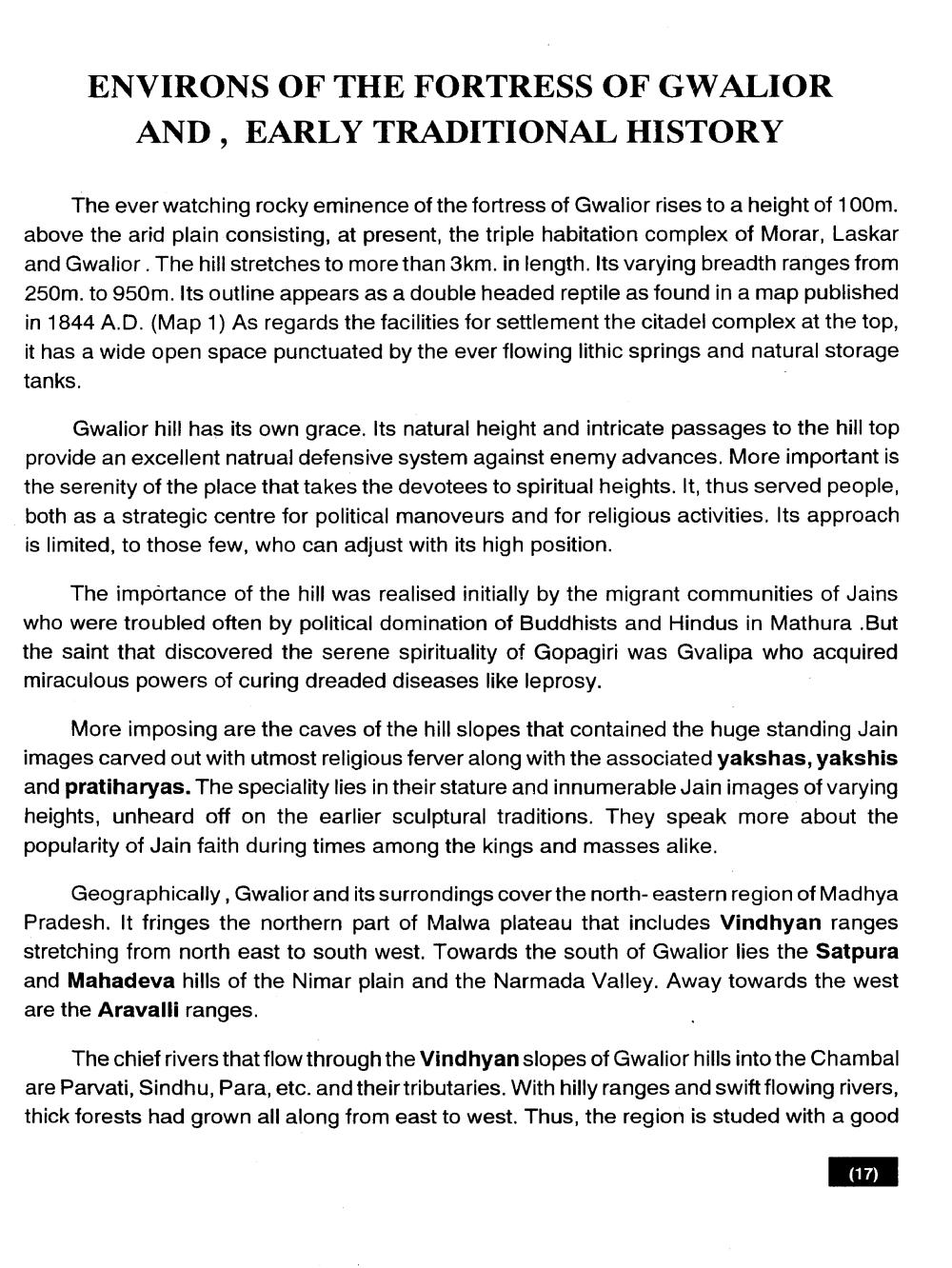________________
ENVIRONS OF THE FORTRESS OF GWALIOR
AND, EARLY TRADITIONAL HISTORY
The ever watching rocky eminence of the fortress of Gwalior rises to a height of 100m. above the arid plain consisting, at present, the triple habitation complex of Morar, Laskar and Gwalior. The hill stretches to more than 3km. in length. Its varying breadth ranges from 250m. to 950m. Its outline appears as a double headed reptile as found in a map published in 1844 A.D. (Map 1) As regards the facilities for settlement the citadel complex at the top, it has a wide open space punctuated by the ever flowing lithic springs and natural storage tanks.
Gwalior hill has its own grace. Its natural height and intricate passages to the hill top provide an excellent natrual defensive system against enemy advances. More important is the serenity of the place that takes the devotees to spiritual heights. It, thus served people, both as a strategic centre for political manoveurs and for religious activities. Its approach is limited, to those few, who can adjust with its high position.
The importance of the hill was realised initially by the migrant communities of Jains who were troubled often by political domination of Buddhists and Hindus in Mathura .But the saint that discovered the serene spirituality of Gopagiri was Gvalipa who acquired miraculous powers of curing dreaded diseases like leprosy.
More imposing are the caves of the hill slopes that contained the huge standing Jain images carved out with utmost religious ferver along with the associated yakshas, yakshis and pratiharyas. The speciality lies in their stature and innumerable Jain images of varying heights, unheard off on the earlier sculptural traditions. They speak more about the popularity of Jain faith during times among the kings and masses alike.
Geographically, Gwalior and its surrondings cover the north-eastern region of Madhya Pradesh. It fringes the northern part of Malwa plateau that includes Vindhyan ranges stretching from north east to south west. Towards the south of Gwalior lies the Satpura and Mahadeva hills of the Nimar plain and the Narmada Valley. Away towards the west are the Aravalli ranges.
The chief rivers that flow through the Vindhyan slopes of Gwalior hills into the Chambal are Parvati, Sindhu, Para, etc. and their tributaries. With hilly ranges and swift flowing rivers, thick forests had grown all along from east to west. Thus, the region is studed with a good
(17)




